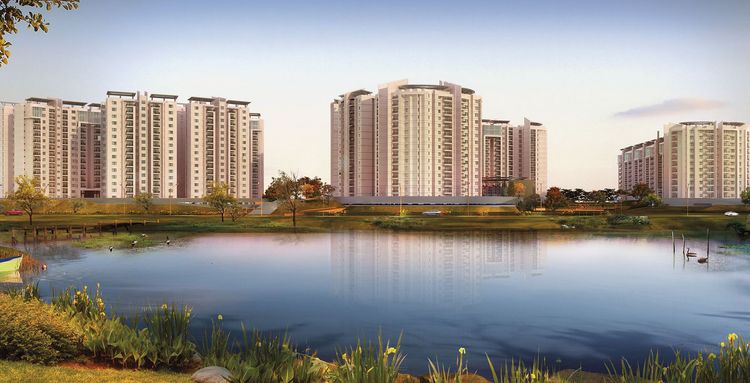Decades ago, when I first started working in Bangalore's real estate market, the city was booming in a way that felt like it could never stop. Everyone was buying, everyone was building and it felt like the market would just keep going up. But today, things are different.
While we hear about changes in the tech sector and rising property prices, we also see stronger infrastructure, better-planned developments and a maturing market that’s learning to balance growth with stability.
In my experience, Bengaluru’s real estate market has never been about short-term highs or lows, it’s about finding steady value in a city that keeps reinventing itself.
This playbook is for homebuyers who want a clear, updated view of Bengaluru’s real estate market in October 2025, what’s changing, what’s holding strong and where the real opportunities lie.
Signal #1: What’s Really Shaping the Job Market and Real Estate Demand
If you’re looking at the job market today, it’s hard not to feel anxious. Headlines are full of layoffs and it’s definitely concerning. But if you focus only on that, you’re missing the bigger picture.
What’s actually happening is a shift in the kinds of jobs companies need. Instead of hiring for rapid, unchecked growth, businesses are now focusing on smart, sustainable growth. They’re trimming roles that aren’t adding value but at the same time they’re hunting for top talent in key areas.
Take Nvidia, for example, its expanding campus in Bangalore shows there’s a new class of professionals who are highly sought after.
But here’s the twist: alongside the layoffs, something else is happening that’s really shifting the game.
The ESOPs: Over the past couple of years, thousands of employees in companies like Flipkart, PhonePe and others have been cashing in their ESOPs (Employee Stock Ownership Plans).
And now, with Swiggy’s IPO already launched and Zepto gearing up for one soon, there’s a clear wave of new-wealth buyers entering the housing market.
What does that mean for the real estate market?
These folks are coming into the market with solid credit scores and hefty down payments. It’s a whole new group of buyers and they’re especially interested in premium and mid-range homes.
So while the job cuts may grab the headlines, the wealth from these ESOP payouts is creating a whole new level of demand. This group of buyers is driving up prices in some of the most desirable areas of Bangalore.

Signal #2: The Scale of Bangalore's Corporate Engine is Grossly Underestimated
While startups get most of the attention, the real power behind Bangalore’s economy is the corporate giants quietly making a huge impact. These companies may not always make the news but they’re the ones driving the city’s growth in a big way.
Take a look at the numbers. In 2024, Bangalore leased nearly 50% of the total 28 million square feet of office space taken up by Global Capability Centers (GCCs) across India. And this trend hasn’t slowed down in 2025.
So, what does this mean for real estate? It’s simple: the more corporate giants that set up here, the more skilled professionals they bring with them. The GCC workforce in India has hit 2.2 million and Bangalore is home to the largest chunk, about 750,000 high-skilled professionals.
Now, here’s where it gets interesting: for every 100 square feet of office space, there’s usually a need for around 1,000 square feet of residential space. With 40-50 million square feet of new commercial office space coming to Bangalore in the next 3-4 years, that translates into a huge demand for new homes, around 400-500 million square feet of residential space.
This isn’t just a prediction but a clear sign that the demand for housing in Bangalore is set to soar.
Signal #3: The Past Is a Blueprint for the Future
To understand where Bangalore’s real estate market is going, we should first look at how it got here. The city’s residential growth has always been closely linked to its commercial hubs, places where businesses thrive and people move in because of job opportunities.
Let’s take Whitefield, for example. It wasn’t always the bustling area it is now. It started off as a quiet suburb but when ITPB (International Tech Park Bangalore) came along, things started to change. It brought in a lot of companies and professionals, which made it a prime location for homes too.
Then there’s ORR (Outer Ring Road) from Bellandur to Marathahalli. This area quickly became the tech hub of Bangalore with big IT companies setting up. But the roads and infrastructure couldn’t keep up with the rapid growth. Traffic got worse and basic services struggled to handle the growing population. That created challenges for residents in the long run.
Electronic City took a different approach. It was one of Bangalore’s first planned tech hubs. It wasn’t just about business parks but they also planned for housing, which made it a more sustainable place to live in the long run.
Then we have Sarjapur Road, which grew almost as an afterthought. New tech campuses were built but housing came before infrastructure and that created some problems.
Poor connectivity and basic services like water became bigger issues, which made it a bit harder for people to get around.
The key takeaway? Commercial development sparked the growth but it’s the infrastructure that makes it sustainable. In the past, Bangalore relied too much on roads. But that’s not the solution anymore. The future lies in planning around connectivity like metro lines and better public transport.
Signal #4: Connectivity is the New Prime
If you’ve been following Bangalore’s growth, you’ll know that what truly defines a neighbourhood’s value isn’t just proximity to IT parks anymore, it’s how well the area is connected across the city. Commute convenience has become the new measure of livability.
The completion of the Purple Line up to Whitefield and the upcoming Blue Line from Silk Board to Kempegowda International Airport are game changers. Together, these corridors are transforming how people move across East and North Bengaluru.
Let’s break it down:
Areas Ready to Thrive
- North Bengaluru (Hebbal, Hennur, Thanisandra, Airport Corridor):
With the Blue Line metro connecting all the way to the airport and new corporate zones expanding around it, North Bangalore is moving into its next growth phase. The region is cleaner, better planned, and offers long-term potential for both homeowners and investors. - East Bengaluru (Whitefield, Kadugodi, Soukya Road, Hoskote):
With Whitefield now fully connected by metro and new infrastructure like the STRR improving regional accessibility, the eastern belt continues to strengthen its position as a balanced mix of work and residential convenience. The upcoming developments around Hoskote and Soukya Road, including Godrej’s new project are proof of how quickly this area is evolving.
Areas That Might Struggle (For Now)
- Sarjapur Road:
While still a preferred IT corridor, Sarjapur is seeing slower infrastructure growth. The proposed metro line connecting it to the rest of the network will take several more years to complete. Until then, road congestion and water supply remain pain points that limit its near-term livability advantage.
Clear Directions for Homebuyers in October 2025
Buying a home today is no longer just about finding the "prettiest" property or the one with the best brand name. It's about being smart and that means prioritizing livability over perceived prestige.
Focus on What Matters
When you’re checking out a property, think about the essentials that will make your everyday life easier.
- How reliable is the water supply? In Bangalore, Cauvery water is gold, if a property has it, that’s a big win.
- Also, think about how close the property is to a metro station. Access to the metro means you’re connected to the entire city, no matter where you work or where you want to go.
- And don’t forget about the internal roads, are they well maintained? Poor roads can really impact your daily routine, so it’s worth paying attention to the basics.
Buy for Your Life, Not Just Your Job
Your office location might change. It’s just the nature of the working world now. So when you’re buying a home, look for a location that gives you access to multiple parts of the city with great connectivity.
That way, no matter where you end up working in the future, your home will always be in a well-connected area.
For Investors - Look for the Sweet Spot
If you’re thinking about investing, the key to making a solid return lies in "infra-arbitrage." What does that mean? It’s about finding areas where the metro is under construction but hasn’t fully impacted the property prices yet.
These are the spots that are ripe for capital appreciation in the next few years. It's like buying stocks before they skyrocket. When the metro gets fully operational, property values in those areas are going to see a major boost.
The Bottom Line
The Bangalore real estate market isn’t the same as it used to be. It’s not a one-size-fits-all scenario where everything rises in value. It’s more complex now and only the informed buyer will succeed. So focus on the big, undeniable changes happening like commercial growth, targeted wealth creation and expanding infrastructure. That’s how you’ll make a smart decision that will continue to pay off for years to come.
Want expert guidance on where to buy next?
Book a free call with market experts at Propsoch!
Get Started Today!








